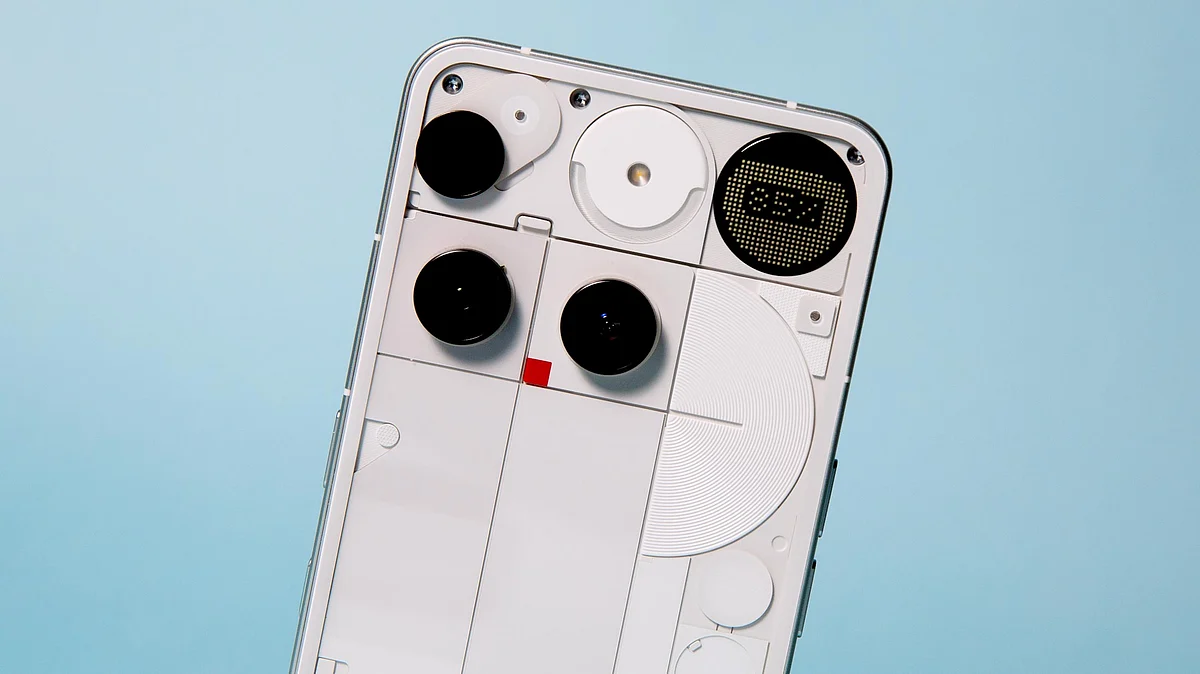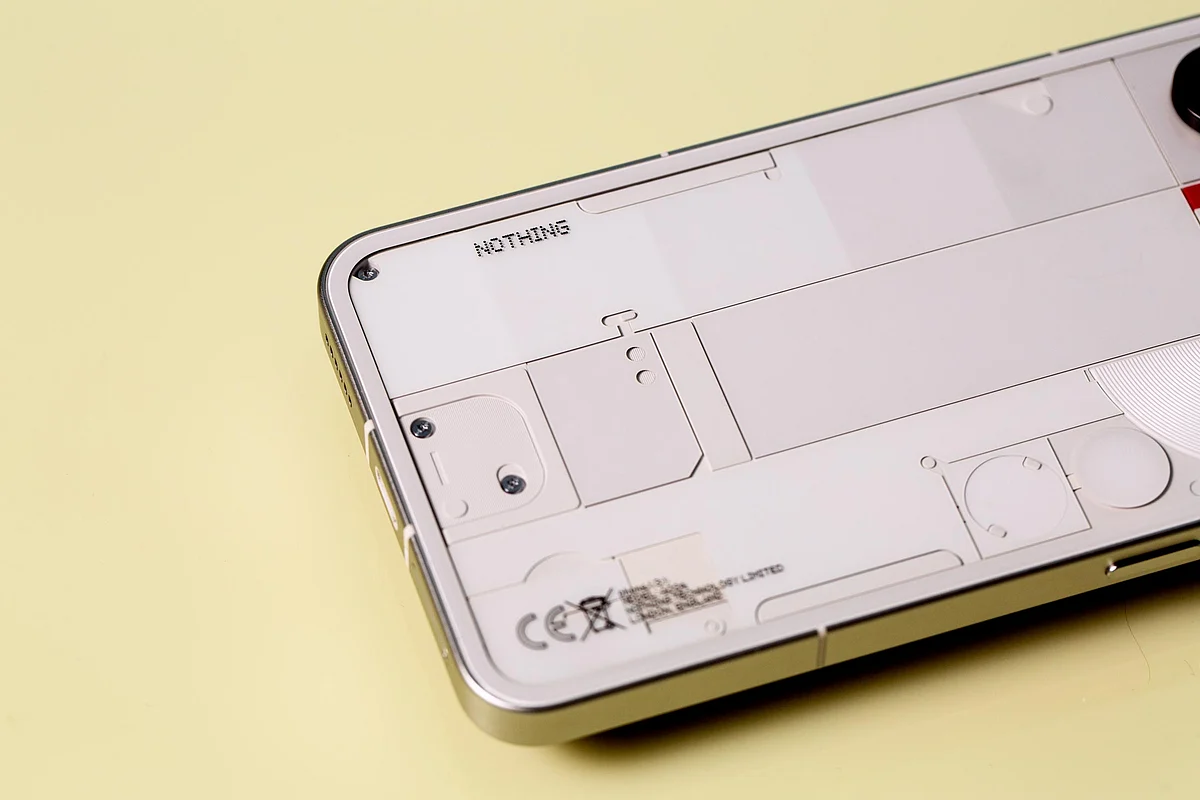Nothing's Phone 3 Is Stymied By Contentious Design And Price
Posts on social media networks have also derided Nothing for phasing out the 'Glyph Lights', a collection of LED strips on the rear of the Phone 1 and Phone 2 that gave those devices a bold identity.

Earlier this month, buzzy consumer tech startup Nothing thought it was kicking off its transformation from an eccentric gadget brand into something much bigger. Instead, its latest device — the Phone 3 — has been mired in controversy among the same customers who rallied behind the company’s past products.
“I don’t know why people are so emotional about a phone design,” said Carl Pei, the startup’s founder and chief executive officer, in a recent “Nothing CEO reacts” video addressing the complaints. “Either you like it or you don’t like it. And if you don’t like it, just move on.” Pei’s video series has racked up millions of views and has helped the niche brand reach new consumers.
But this time, the tone throughout the clip was markedly different. After announcing the $799 Phone 3 at a packed London event in early July, Nothing has spent weeks on its back foot contending with a vocal contingent of tech enthusiasts who have lambasted the company for the phone’s peculiar industrial design and what they perceive to be an unreasonable price.
Billed as Nothing’s “first true flagship,” the Android-powered Phone 3 costs $200 more than its direct predecessor and is priced on par with Apple Inc.’s iPhone 16, Samsung Electronics Co.’s Galaxy S25 and Google’s Pixel 9. This was supposed to be a banner moment for a five-year-old tech upstart that recently crossed $1 billion in lifetime sales.
But Nothing’s fans are unconvinced that the Phone 3’s hardware justifies the same price as those Big Tech staples for two main reasons: It lacks the most performant Qualcomm Inc. processor chip found in premium Android phones like the S25, and the camera performance falls short of other handsets in this price bracket.
The company said in a statement that it is “pleased with the response to Phone 3 so far and the momentum” it is seeing globally. It wouldn’t, however, share sales figures or reveal how the device is selling compared to the earlier Phone 1 and Phone 2.
Posts across Reddit and other social media networks have also derided Nothing for phasing out the “Glyph Lights,” a collection of LED strips on the rear of the Phone 1 and Phone 2 that gave those devices a bold identity.

The Phone 3’s Glyph Matrix interface can display notifications and simple games.
The company has replaced those lights with the new Glyph Matrix, a small, circular dot-matrix display at the upper-right corner of the Phone 3’s see-through glass backplate. It alerts the user to notifications and incoming calls, and can visualize things like the battery percentage and volume level. You can assign custom icons to individual contacts, making it easy to see at a glance when they’re trying to reach you.
Pei has insisted that the Glyph Matrix is not a gimmick and is meant to help users be less compulsive about checking their phone. But early examples of so-called “Glyph Toys” — including a Magic 8 ball and games like Spin The Bottle and Rock, Paper, Scissors — have undercut that message.
Over weeks of testing the Phone 3, this quirky secondary display has prompted questions from strangers at coffee shops, but most see it as little more than a party trick or a brief cure for boredom. And app developers are unlikely to make the effort to support the tiny second screen.
The handset’s design was the subject of harsh criticism early on, and comments on Nothing’s YouTube channel have been bruising. Many of them have focused on the oddly placed array of cameras; the telephoto zoom lens, which cuts through the phone’s circuit board to reduce thickness, is not physically aligned with the other lenses, for instance.
Whether a phone looks nice is largely subjective, and in an industry that churns out smartphones that barely change from one year to the next, Nothing stands out for keeping things interesting. “On one hand, it’s really great that we have so many users that care about us,” Pei said in the video. “But on the other hand, I think it went a little overboard with Phone 3. I mean, we have colleagues who are getting harassed now for the design.”
Still, there are elegant touches to the Phone 3, like the different gradients of white or black on its circuit board and the small red square that blinks whenever you’re recording video. And the front is a lot more conventional than the back. The 6.67-inch OLED screen is vivid and surrounded by slim bezels. Nothing’s customization of Android is tasteful, with stylish typefaces and monochrome themes that might also help reduce your screen time. And if not, the battery still comfortably lasts through a day of use.
Nothing’s decision to equip the Phone 3 with Qualcomm’s Snapdragon 8S Gen 4 processor — as opposed to the Snapdragon 8 Elite used in phones like the S25 Ultra — has been a sticking point that fans say is a glaring mismatch for the device’s positioning. Pei said in his video that his choice of chip might have been wrong for the “0.1 percent of the population who need the bleeding edge of processors” but that his brand was “never meant for the spec warriors.”
In testing, the Phone 3 has proven speedy for everyday tasks like photo retouching and video editing, and it hasn’t slowed down when running demanding games.

The Phone 3 has a see-through glass back.
As for the price, Pei isn’t directly blaming tariffs like some other gadget makers. Instead, he says the price increase reflects the company’s current economies of scale. “We do have the highest costs for our components compared to everybody else,” he said. “For the same amount of budget, we don’t get the same amount of components.” This will be less of a pain point as Nothing continues to grow, Pei said, but some buyers are still irked.
A spokesperson said Nothing has no plans to lower the price of the Phone 3, saying the startup’s margins are key to continued investment. Most of the cost complaints are coming from users in India, the spokesperson added, which “isn’t the core focus market” for the Phone 3, according to the company. “We’ve designed our product portfolio with different price points to serve different regions, and we have other offerings in the range that are more India-focused,” the representative said.
Like other phone makers, Nothing is layering in more artificial intelligence-powered software features. The Phone 3 includes Google’s Gemini assistant, which can quickly be accessed from a search bar in the app drawer. There’s also a dedicated AI hardware button that triggers what the company calls the Essential Space. Pressing this key takes a screenshot, and you can write down a short note or record a voice memo that gets attached to it. Holding the button starts a voice memo recording, and then Nothing uses AI to summarize what’s captured.
Nothing isn’t pushing AI to an overbearing degree. But the flipside is that there isn’t anything special or unique about the company’s own AI feature set — little that would lure users away from Gemini, Anthropic’s Claude chatbot or other options. “We don’t want to lead with gimmicks and set super high expectations — tell a big story and then under-deliver on the product,” Pei said.
That encapsulates the Phone 3 as a whole. It’s a fine Android phone, and one whose design stands out from the crowd. But flagship phones need to be great on all fronts. The Phone 3 is good enough at most things, but lacks a special trick that might set it apart from better-known smartphone competitors. The Glyph Matrix, at least in its current form, isn’t that.
At its current price, the handset is too expensive for what it offers. The hardware specifications aren’t on the level of Samsung’s Galaxy S25. The camera can’t keep up with Google’s Pixel 9. And for however boring an iPhone might seem to the Nothing faithful, it’s still a more cohesive, better overall package.
It would be easier to make a case for the Phone 3 if it were $500 or $600. Distinctive looks and a gimmicky second screen don’t warrant this much of a premium, but for the right price, the device might resonate with consumers tired of the same smartphone look and feel.

